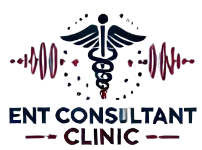Sinus problems can severely impact quality of life, leading to chronic pain, congestion, and frequent infections. In cases where conservative methods such as medications or nasal sprays don’t provide adequate relief, endoscopic sinus surgery may be recommended.
Mr Anurag Jain, award-winning consultant ENT surgeon, provides an expert insight into endoscopic sinus surgery, including how it’s performed and what the recovery process entails.
What is endoscopic sinus surgery?
Endoscopic sinus surgery is a minimally invasive procedure used to treat chronic sinusitis, nasal polyps, and structural issues that affect sinus drainage. It’s generally recommended when non-surgical treatments such as antibiotics and nasal corticosteroids fail to provide lasting relief, and symptoms significantly affect your quality of life.
How is endoscopic sinus surgery performed?
Endoscopic sinus surgery is performed under general anaesthesia to ensure your comfort, and it typically lasts between 30 minutes and 2 hours, depending on the complexity of the case.
During the procedure, your ENT surgeon will begin by inserting an endoscope (a small rigid tube equipped with a camera and light) through your nostrils. The camera in the endoscope will send images to a monitor, allowing your surgeon to view the inside of the sinuses.
Through the nostrils, your surgeon will then use small surgical instruments to remove blockages, nasal polyps, or infected tissue, as well as to widen the sinus openings, improving the flow of mucus and the function of the sinuses. In some cases, your surgeon will also straighten a deviated septum, if this is contributing to the blockage.
Your surgeon will monitor your progress throughout the procedure using the endoscope to ensure that your sinuses are properly opened and cleaned. No external incisions are required, as endoscopic sinus surgery is done entirely through the nasal passages.
Are there any potential risks or complications of endoscopic sinus surgery?
Endoscopic sinus surgery is generally regarded as safe; however, like any surgical procedure, it carries some risks and potential complications. These may include infection, bleeding, scarring, damage to delicate structures, and changes in the sense of smell.
While the risks are low, it’s important to discuss them thoroughly with your surgeon, carefully adhere to postoperative instructions, and attend all follow-up appointments to monitor for any complications.
What is the recovery process like after endoscopic sinus surgery?
After surgery, you will likely experience some swelling, nasal congestion, and mild discomfort, which can typically be managed with prescribed pain medication.
Additionally, it’s also common to have small amounts of bleeding in the first few days after surgery, but this should stop within a week. Your surgeon will recommend saline nasal sprays or irrigation systems to keep your sinuses moist and help in clearing out mucus or blood clots.
Most patients will be able to return home the same day as the surgery. Once home, you will be advised to avoid strenuous activities, such as heavy lifting, and blowing your nose for at least 2 weeks to reduce the risk of complications like bleeding.
In the long-term, you can expect significant relief from chronic sinus symptoms, including reduced nasal congestion, facial pain, and headaches. Many patients will also experience improved nasal breathing and better overall quality of life.
Regular follow-up appointments with your surgeon are essential to monitor healing and ensure the best outcome.







